Best Driver Shafts 2025
Our guide to the best driver shafts on the market to ensure you're maximizing potential off the tee

Sam Tremlett
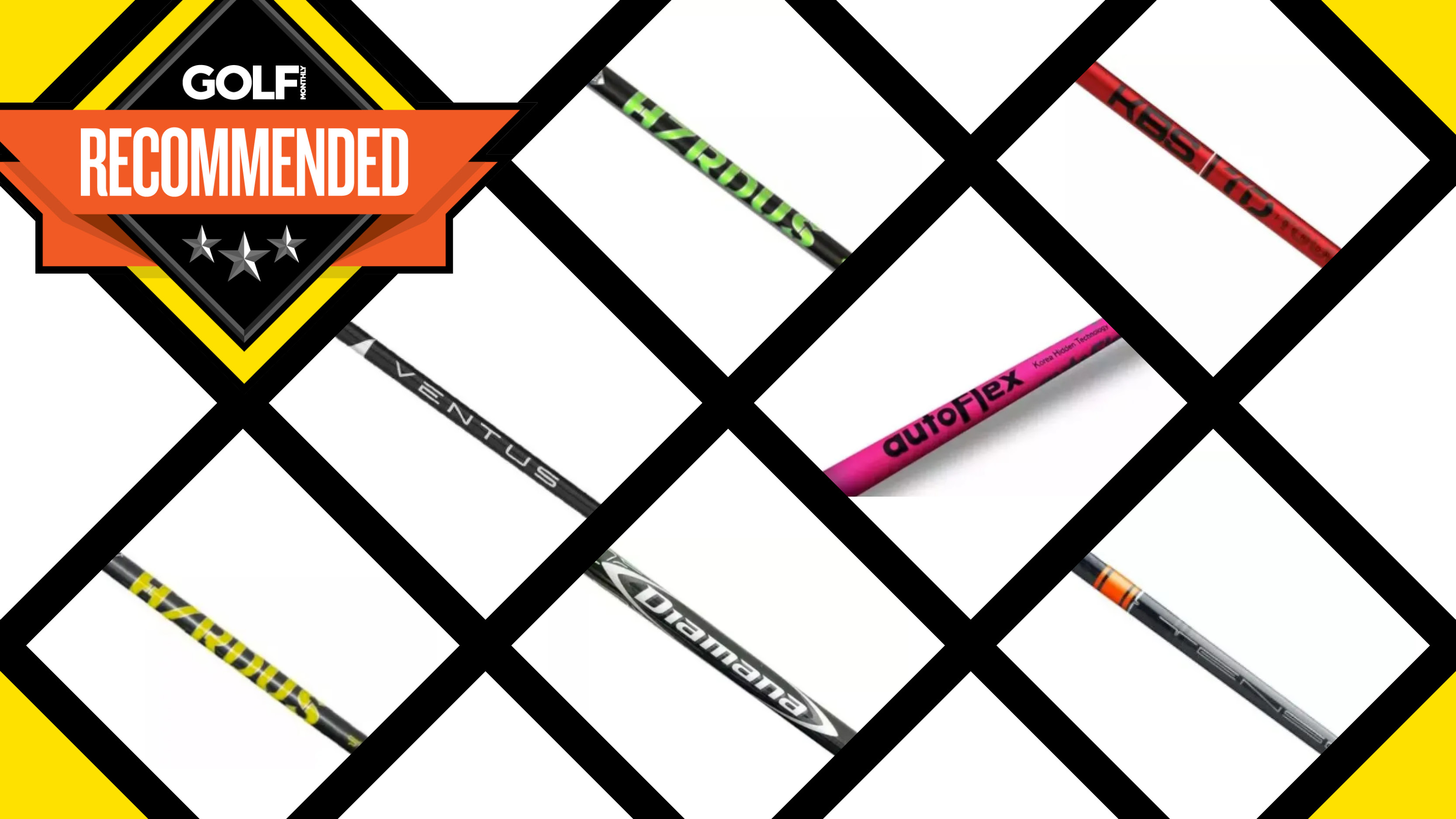
Choices used to be few and far between when it came to driver shafts - there will be some who even remember a time before graphite - but nowadays, the options seem endless. That can make picking out a new driver shaft a tricky decision, but it’s worth investing some time into making sure you find the right one for your game as the shaft is an extremely important component in how the driver performs.
It’s no longer just a case of choosing the stiffness you’d like and going on your merry way either. For your unique swing, it might be that you require something lighter for the specific head weight, or even a shaft that has a certain ‘kick point’ that will optimize your launch conditions. Whatever it is, make sure and do your research and ideally test some different clubs out before committing to what is a big decision.
In this guide to the best driver shafts, after testing a variety of models, our aim is to give you exactly that, a guide, that will hopefully help you make the most informed decision you can. As far as picking one specific model for you, this is tricky and we would always recommend a custom fitting session so you can get a gauge on exact models. In terms of the overall best model, the Fujikura Ventus Black is hard to ignore given the performance, and the Project X Smoke HZRDUS models are very good too. Indeed Autoflex, KBS and Mitsubishi make high quality shafts for the driver as well.
While you're here, you might also want to check out our guides to the best golf drivers and the most forgiving drivers on the market. Or, if you're new to the game - first of all, welcome - why not cast your eye over our list of the best golf drivers for beginners.
Best Driver Shafts 2025
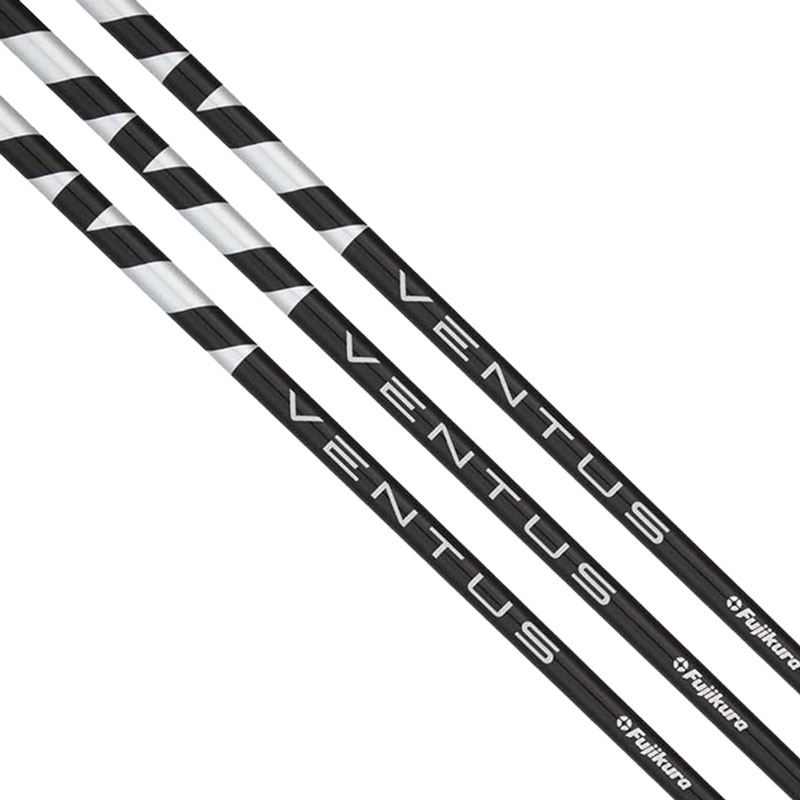
Flex: S-TX
Weight: 58g-85g
Length: 46"
Kick Point: N/A
Torque: 3.4-2.8 degrees
This shaft has been designed to tighten shot dispersion and maximize ball speed, no matter the strike location. The Ventus also features Fujikura’s all-new VeloCore technology in an ultra-stiff tip option. Additionally, the shaft is a multi-material construction, making it extremely strong and stable through impact for the optimum in smash factor. But it retains the feel thanks to the straight taper design and 40 Ton bias layers.
As a result, we think it's a really versatile product and should suit a lot of swing types. It is built to help you improve your shot dispersion too, with the shaft operating to give players a lot more consistency which is in part helped by the VeloCore. That is a multi-material bias core construction that provides greater stability through impact, improving your smash factor too! You'll also find many of Fujikura shafts on some of the best TaylorMade drivers.
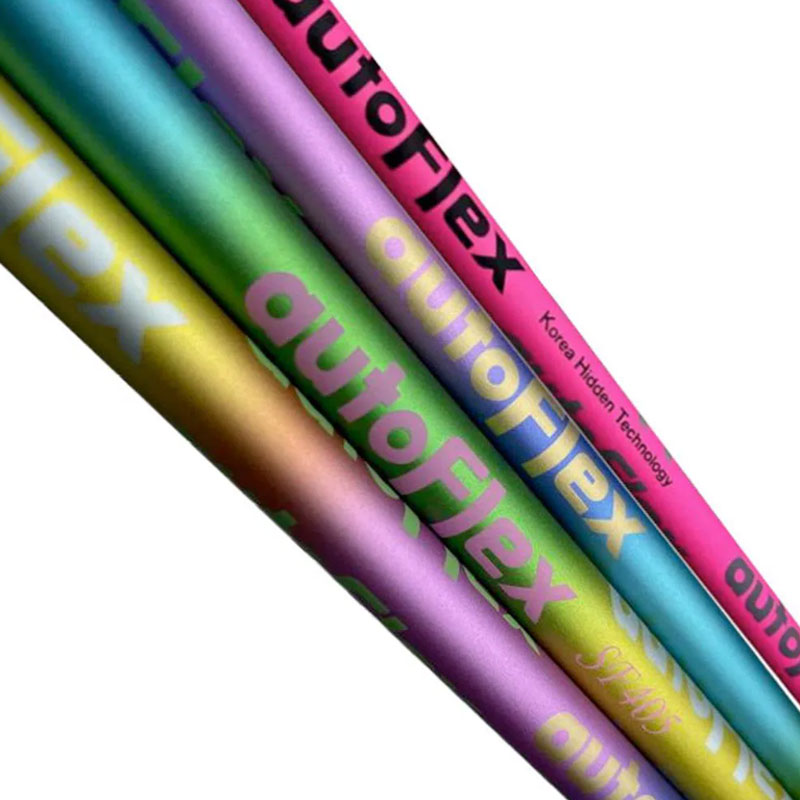
Flex: Varies on clubhead speed
Weight: 41g-57g
Length: 45"-47"
Kick point: N/A
Torque: N/A
The Autoflex Pink Shaft caused quite the stir when it came out because of promises of extra distance, the pink look and 'Korea Hidden Technology'. The pink shaft was tested by some of the world's best players and it seems most users do indeed get an increase in ball speed and distance. How?
Well the shafts are incredibly light and whippy but the shaft and clubhead still manage to keep up when approaching impact, even for those faster swingers. The shaft does not follow conventional regular-stiff shaft measurements either because the shafts are built upon how fast you swing the golf club. Finally if the pink is not for you, you can also get the shafts in a rainbow design, black, yellow and sometimes special edition finishes.
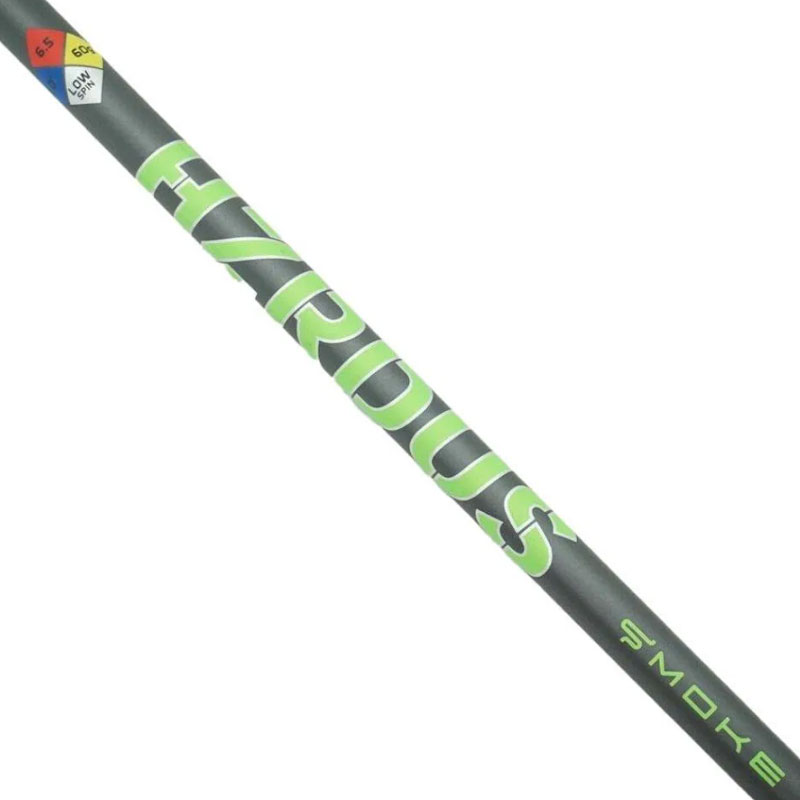
Flex: R-TX
Weight: 61g-74g
Length: 46"
Kick Point: N/A
Torque: 3.2-2.8 degrees
The Smoke Green is the stiffest HZRDUS shaft yet, having been designed to reduce spin for the fastest swingers. Using Hexcel’s HexTow HM63, Project X has engineered a shaft that delivers the optimum in stability. That means this driver shaft is built to reduce spin for players with very fast swing speeds, helping you keep the club face open and flat on impact. For those who want to make a statement, the Smoke Green also comes in two different colors – the traditional Smoke grey and a sleek Gamma PVD green.
With its vivid green looks and stable profile, the HZRDUS Smoke Green has affectionately been nicknamed “The Hulk”. If you like how the Project X HZRDUS shafts feel, it might also be worth checking out our guide to the best Callaway drivers as they come as standard on many of their fantastic drivers.
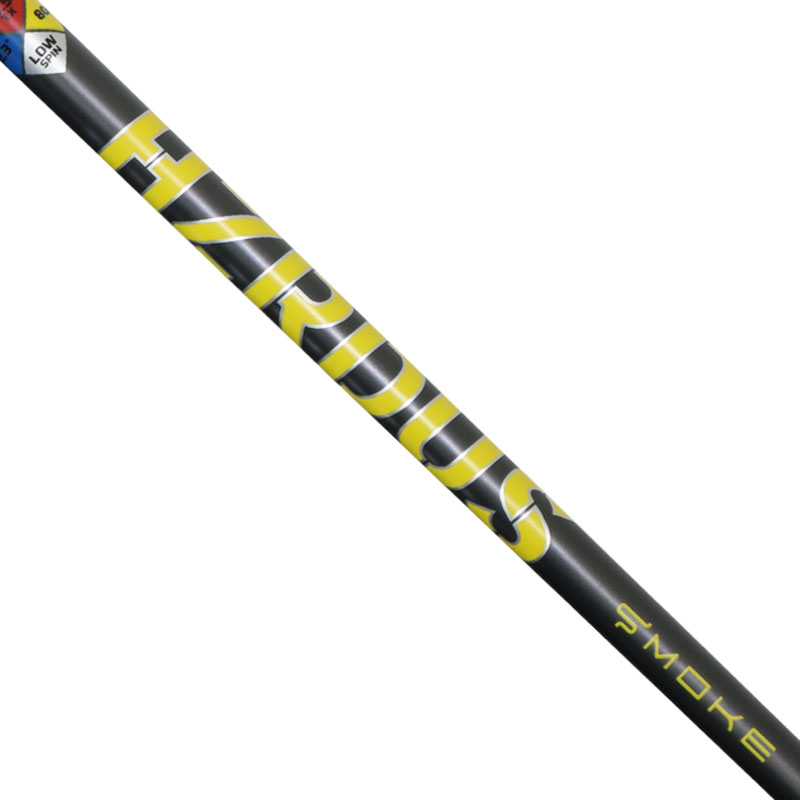
Flex: R-TX
Weight: 64g-88g
Length: 46"
Kick point: N/A
Torque: 3.5-2.3 degrees
Another from Project X’s brilliant HZRDUS line, the Smoke Yellow is perfect for golfers with a smooth tempo who like to flight it lower. It’s a counterbalanced shaft meaning additional mass can be added to the head for greater ball speed.
But it will also suit those who like to swing more aggressively thanks to the firmer mid-section than featured in the original HZRDUS Yellow. This also means it offers plenty of stability, which aids consistency, and we could all do with more of that.
For those who want to combine the performance benefits of the Smoke Yellow shaft with one of the best Titleist drivers on the market, it comes as a stock option in the TSR4.
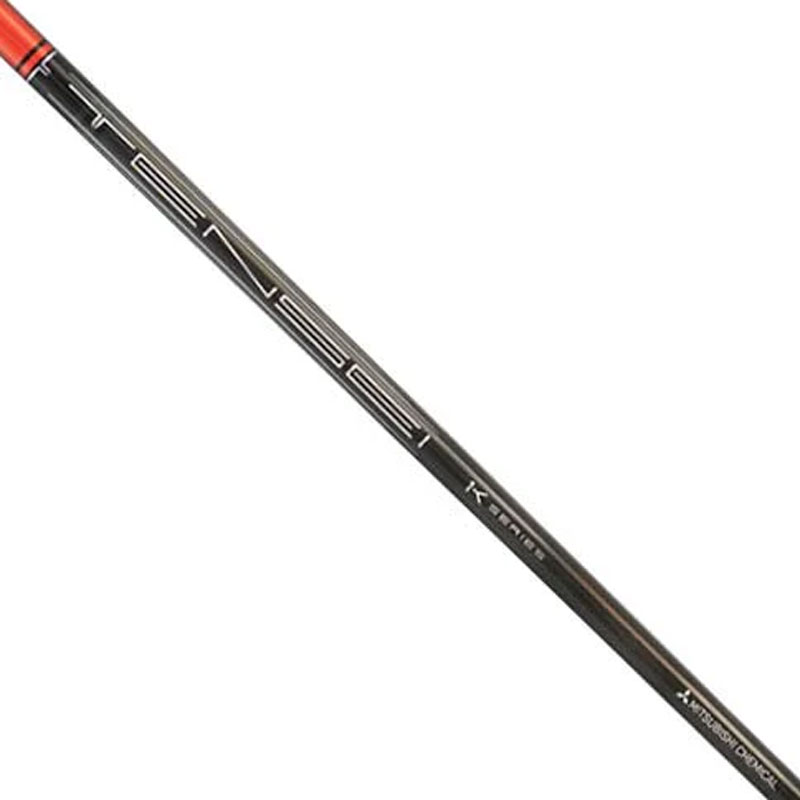
Flex: R-TX
Weight: 54g-95g
Length: 46"
Kick point: High
Torque: 5-2.5 degrees
Mitsuibishi’s Tensei CK Pro Orange expands the CK Series. It features a multi-material design that incorporates more performance-oriented materials than the brand has ever used in a shaft.
Using a counterbalanced design, this first-of-its-kind bend profile for Mitsubishi has an extreme tip-stiff to provide added versatility for the stronger player. It also incorporates the same Carbon Fibre/DuPont Kevlar weave found in the butt-section of all Tensei CK shafts – providing enhanced stability and maximum feel. The tip section is reinforced with MR70, Mitsubishi Chemical’s strongest carbon fibre, delivering lower torque and excellent control. As an added benefit, the Tensei shaft is available as a stock option in some of the best Ping drivers right now.
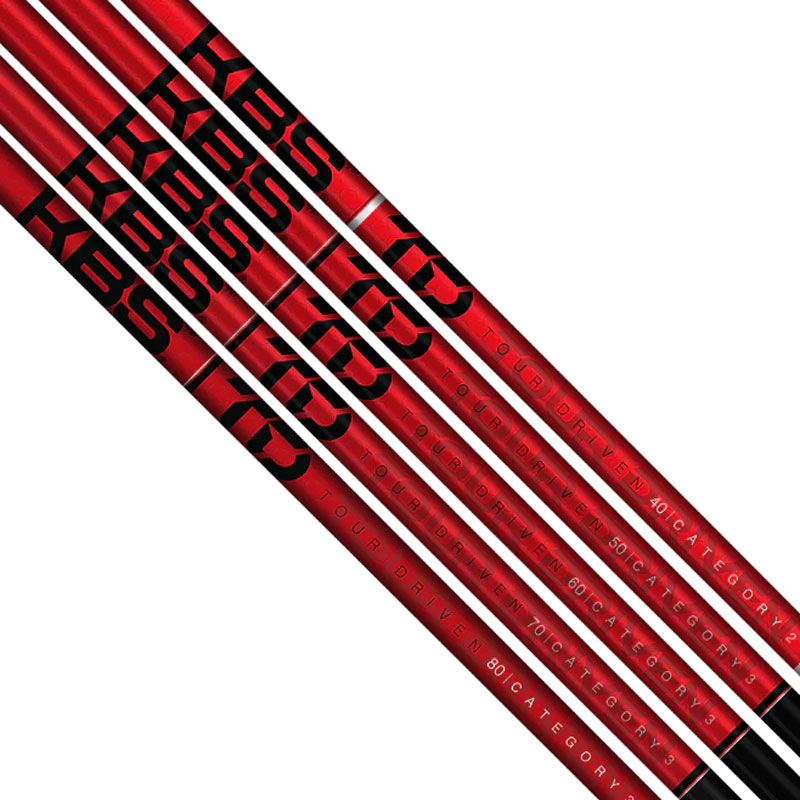
Flex: R-TX
Weight: 46g-81g
Length: 45-46"
Kick point: Low-high
Torque: 5.2-2.9 degrees
The KBS (Kim Braly Signature) TD is lighter than the renowned brand’s iron shafts and means KBS is now able to fit shafts to every club in a golfer’s bag. We found it to have the same classic KBS feel that we’ve become accustomed to, with the specific features making it ideal for those who want to really max out their distance. The combination of mid launch and low spin means players of all swing speeds will be able to fulfil their potential off the tee.
We think that makes it a great option for a variety of golfers looking to improve their game off the tee. In addition, it’s also very stable so will give amateurs the ability to tighten their dispersion and therefore increase their confidence. Stability is one of the key things to consider when buying a new driver and driver shaft.
How we test
When it comes to product testing, our reviews and buyers' guides are built upon a rigorous testing procedure as well as the knowledge and experience of the test team. Ultimately, we aim to be as insightful and honest as possible in our reviews so it is important to acknowledge that no manufacturer can buy a good review. This is because our team tells it how it is and no manufacturer can buy a review.
In relation to shafts, we usually test them thoroughly in hitting sessions, especially when we also have a lot of drivers to test! We would also often put the same shaft in a variety of clubs to gauge performance not only in a controlled environment with a launch monitor, but also out on the golf course to see what the performance is like where it really matters.
How to choose a driver shaft
When purchasing a new driver or a new driver shaft, there are plenty of things to think about as shafts come in a variety of strengths, lengths and builds. Each can play a part in helping you perform better on the golf course, but finding the right shaft for your strength, swing type and ability can sometimes be a difficult task. But don't fret! We've dropped a few important points that you should keep in mind when picking out a new driver shaft!
1. Flex
Choose a shaft too flexible and you’ll overpower the club, causing it to whip round too soon. That can make it a lot easier to miss high and left and the club will generally become too hard to control. Choose a shaft too stiff and you will inevitably swing a touch slower and consequently struggle to square the face at impact, causing you to miss more shots low and right.
The general rule is the faster you swing, the stiffer your shafts should be. And given we swing our fastest with the driver, this makes the shaft a very important factor in performance that you're going to want to consider. For more detailed information on this, check out our video on 'should I use regular or stiff shafts in my golf clubs?'
2. Weight
A shaft that's too heavy and too light will also have an impact on your driver performance so it is important to get the right weight for you. Again, a lot of that comes back to how fast you swing your driver. Golfers with a swing speed between 90 and 105mph will tend to prefer a shaft weight of around 60g. 70g shafts are a better fit for players who swing the club around 105 to 115.
3. Length
A lot has been said about Bryson DeChambeau using a 48-inch driver for more distance of late but in amateurs the length of driver shaft is important because it is more likely to impact strike pattern. A longer shaft hinders consistency and the strike is usually more towards the heel, whilst a shorter shaft often produces a strike more towards the toe. If you're looking to add more yards to your game but not employ a longer shaft, why not take a look at our best drivers for distance guide.
4. Kick point
Kick point is where the shaft flexes the most. A club with a high kick point should produce a lower trajectory and help players who lose distance from a high, spinning flight, while a low kick point will launch the ball higher. Because stiffer shafts need more power or a more efficient action to work at their best, they usually feature higher kick points to help players control their ball flights.
5. Torque
A word most associated with cars, torque is also something you should know about in driver shafts. In the golfing context torque is all about resistance to twisting, so a shaft with a low torque measurement will have greater resistance and the opposite is true for a high torque measurement.
As a result high-speed players, and ones who draw the ball may prefer low torque, whilst slower swingers and slicers of the golf ball may prefer higher torque models. That being said every player releases the club in a different way and at different speeds so testing may be required here. Take a look at our best drivers for high-handicappers for several models that have draw bias built into their clubhead designs.
6. Custom fitting
The easiest way for you to gain a lot of understanding around driver shafts and which will be best suited to you is through custom fitting. Fitting experts will be able to see how fast you swing and cater a driver shaft to your swing speed, along with the other factors we mentioned here.
For more information on some of the best drivers on the market right now, take a look at our guides to the best Callaway drivers, best TaylorMade Drivers and best Titleist drivers.
FAQs
What shaft is best for my driver?
The answer to this question will depend on a variety of factors but first we would always recommend going to see a professional fitter because they will be able to guide you to using shafts more suitable for your game. What we have found is when asking this question to fitters, they often say that people should use their current driver shaft as a baseline. If shots tend to be low and little spin, then they would recommend trying a softer flex, whereas if shots are ballooning, try a stiffer shaft. If you're caught between two flexes, you can “tip” a softer flex to make it stiffer in the tip section. As far as particular model goes, this would require the expertise of a professional fitter because every single golfer is so different.
What driver shaft is most used out on Tour?
Whilst information on shafts is hard to come by, we believe the most used driver shafts come from Fujikura and two of the most popular models are the Ventus Blue, and the Ventus Black.
What does torque in a driver shaft mean?
Torque in a club shaft is something that you might not have come across before when talking about golf club shafts. It refers to how much the shaft twists laterally in the downswing. This can have a big impact on how open or closed the face is at impact and thus how much you draw or fade your shot. If you are prone to a bad slice, you might want to use a shaft that has a higher torque to try and add a draw bias onto your shots. Meanwhile, if you have a natural draw you might want to use a shaft that has a lower torque if you want to hit the ball straighter.
Subscribe to the Golf Monthly newsletter to stay up to date with all the latest tour news, equipment news, reviews, head-to-heads and buyer’s guides from our team of experienced experts.

Joe has worked in the golf industry for nearly 20 years in a variety of roles. After a successful amateur career being involved in England squads at every age group, Joe completed his PGA degree qualification in 2014 as one of the top ten graduates in his training year and subsequently went on to become Head PGA Professional at Ryder Cup venue The Celtic Manor Resort. Equipment has always been a huge passion of Joe’s, and during his time at Celtic Manor, he headed up the National Fitting Centres for both Titleist and Taylormade. He’s excited to bring his knowledge of hardware to Golf Monthly in the form of equipment reviews and buying advice.
Joe lives in North Devon and still plays sporadically on the PGA West region circuit. His best round in recent years came earlier in 2023 where he managed a 9 under par 63 at Trevose GC in a Devon & Cornwall PGA Tournament.
Joe's current What's In The Bag?
Driver: Switch between TaylorMade Qi35 and Callaway Elyte TD - both with Fujikura Ventus Black 6-X
Fairway wood 1: TaylorMade BRNR Copper Mini Driver - Fujikura Ventus Black 7-X
Fairway wood 2: Callaway Apex UW 17˚- Fujikura Ventus Black 9-X
Irons: TaylorMade P7CB 3-PW with Dynamic Gold Tour Issue X100 shafts
Wedges: Callaway Opus 50, 54, and 60 degrees - Project X LS 6.0 shafts
Putter: LAB Golf Oz.1 (zero shaft lean)
Ball: TaylorMade 2024 TP5x
Grips: Golf Pride Tour Velvet 60R
Bag: Vessel Player IV Pro DXR Stand
- Sam TremlettSenior E-commerce Editor